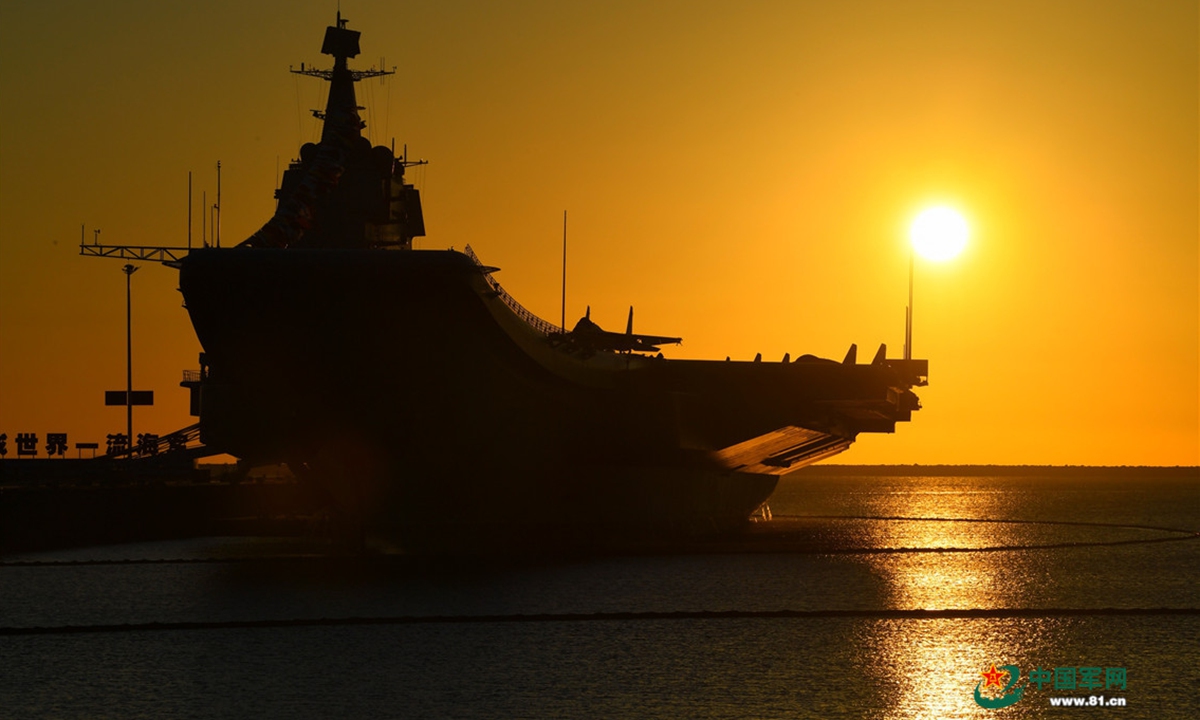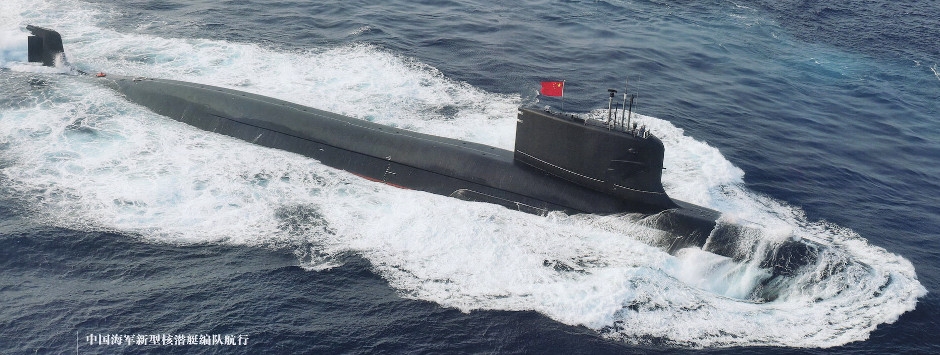
China is building more modern surface combatants and expanding its aircraft carrier and logistics force to grow its naval influence further from shore, according to the Pentagon’s annual report on Chinese military power.
By 2025, the People’s Liberation Army Navy is expected to grow to 400 hulls, up from its fleet of 340, according to the Pentagon’s annual China military report estimates released on Tuesday.
“The PLAN is an increasingly modern and flexible force that has focused on replacing its previous generations of platforms that had limited capabilities in favor of larger, modern multi-role combatants,” reads the report.
“As of 2021, the PLAN is largely composed of modern multi-role platforms featuring advanced anti-ship, anti-air, and anti-submarine weapons and sensors.”
The report, which sums up Chinese military developments in 2021, pegs the growth to the PLAN adding more major surface combatants. The ship total dipped last year from 355 due to a transfer of more than 20 older corvettes to the China Coast Guard.
“At the close of 2021, the PLAN was building an aircraft carrier, a new batch of guided-missile destroyers (DDG), and a new batch of guided missile frigates (FFG),” reads the report.
The bulk of the surface expansion is contained in two programs, the 7,500-ton Luyang III guided-missile Type-52D destroyers and the larger 13,000-ton Type-55 Renhai-class guided-missile cruisers, according to the report.

The Luyang III destroyers are built around a dual-band active electronically scanned array (AESA) air search radar and a 64-cell vertical launch system for multiple missiles similar to the Mk-41 VLS on U.S. surface ships.
The Renhais are much larger with a similar radar and 112 cell VLS cells “and can carry a large load out of weapons including [anti-ship cruise missiles], surface-to-air missiles (SAMs), torpedoes, and anti-submarine weapons along with likely [land-attack cruise missiles] and anti-ship ballistic missiles when those become operational,” according to the report.
As of May, the Chinese have five of the Renhai-class cruisers in commission, according to the South China Morning Post.
The newer classes of ships, with a variety of anti-surface and anti-air missiles, allow the PLAN better protection as its task groups venture farther from the protective umbrella of its shore-based air defense systems and mimic the basic construct of the American Aegis Combat System.
The emphasis on the platforms are anti-surface weapons, according to the report.
“The PLAN recognizes that long-range ASCMs require a robust, over-the-horizon (OTH) targeting capability to realize their full potential. To fill this capability gap, the PLA is investing in joint reconnaissance, surveillance, command, control, and communications systems at the strategic, operational, and tactical levels to provide high-fidelity targeting information to surface and subsurface launch platforms,” reads the report.
The PLAN is developing new submarines more slowly than it’s developing surface ships, “as it works to mature its force, integrate new technologies, and expand its shipyards,” reads the report.
“The PLAN currently operates six nuclear-powered ballistic missile submarines (SSBN), six nuclear-powered attack submarines (SSN), and 44 diesel-powered/air-independent powered attack submarines (SS/SSP). The PLAN will likely maintain between 65 and 70 submarines through the 2020s, replacing older units with more capable units on a near one-to-one basis.”
The Pentagon speculated in the report that China is developing a nuclear guided-missile submarine that would field both anti-surface and land-attack cruise missiles, a new addition this year.

“By the mid-2020s, China will likely build the SHANG class (Type 093B) guided-missile nuclear-powered attack submarine (SSGN). This new SHANG class variant will enhance the PLAN’s anti-surface warfare capability and could provide a clandestine land-attack option if equipped with land-attack cruise missiles,” reads the report.
In terms of amphibious ships, the report highlighted not only the rapid development of the Yushen-class of big-deck amphibious warships, but also the increased use of civilian roll-on/roll-off car carriers that can go into service for military operations.
“This flexibility decreases the requirement to build additional PLAN amphibious ships to successfully assault Taiwan. This operational flexibility also provides operational and logistics units within the [PLAN Marine Corps] the training and proficiency to move between military and civilian vessels not just in a Taiwan scenario, but in any maritime environment where civilian transport vessels are available to the PLANMC and PLAN amphibious ships are not,” reads the report.
In late August, the PLAN held a major amphibious drill using civilian ferries to launch landing craft from sea, USNI News reported.
The PLAN has two operational aircraft carriers, Liaoning and Shandong, based on the Soviet Kuzenetzov, a short take-off but arrested recovery (STOBAR). Both carriers have been active in the Western Pacific. A third carrier, Fujian, will feature a catapult launch and arrested landing and is expected to be operational by 2024.
“This design will enable it to support additional fighter aircraft, fixed-wing early warning aircraft, and more rapid flight operations and thus extend the reach and effectiveness of its carrier-based strike aircraft,” reads the report.
The PLAN continues to refine its carrier aircraft – primarily the Shenyang J-15 Flying Shark, which is an unlicensed copy of the Russian Sukhoi Su-33 fighter.

“In addition to the standard J-15 fighter that currently operates from PLAN carriers, there is a catapult-capable J-15 variant in development,” reads the report.
“The aircraft is currently testing from land-based steam and electromagnetic catapults. A third J-15 variant, the J-15D, is a two-seat aircraft equipped with wingtip electronic support measures/electronic intelligence gathering pods as well as several conformal antennas. The aircraft is intended to fill a dedicated electronic attack role. China is also developing a carrier capable variant of the fifth-generation J-31 fighter.”
All told, the report concludes that the PLAN is working toward deploying an operational carrier battle group in the next several years beyond the first island chain that doesn’t need the shore-based defenses of the rest of the PLA.
“The PLAN’s ability to perform missions beyond the First Island Chain is modest but growing as it gains more experience operating in distant waters and acquires larger and more advanced platforms,” reads the report.





